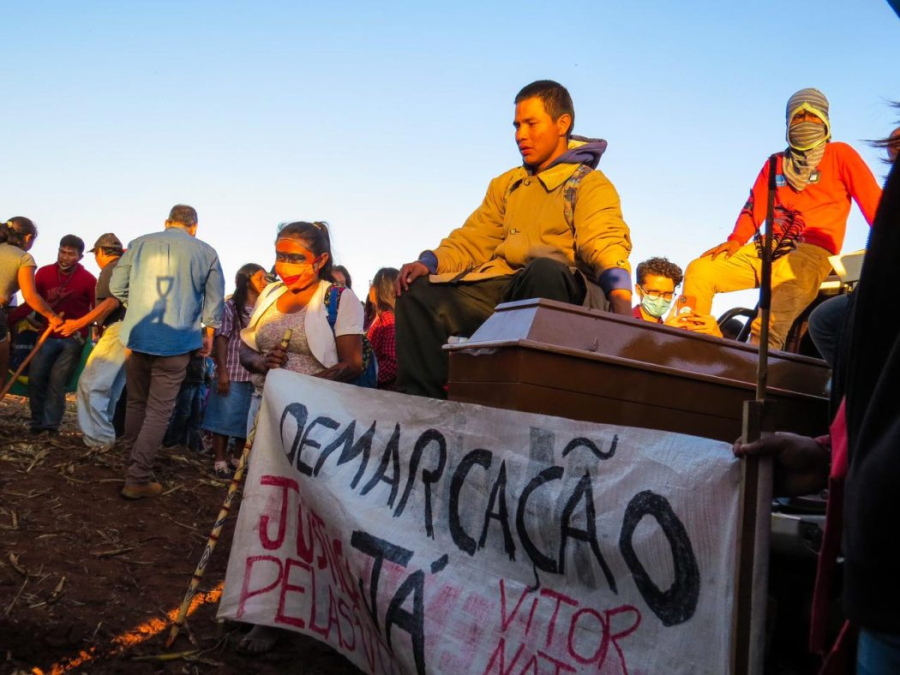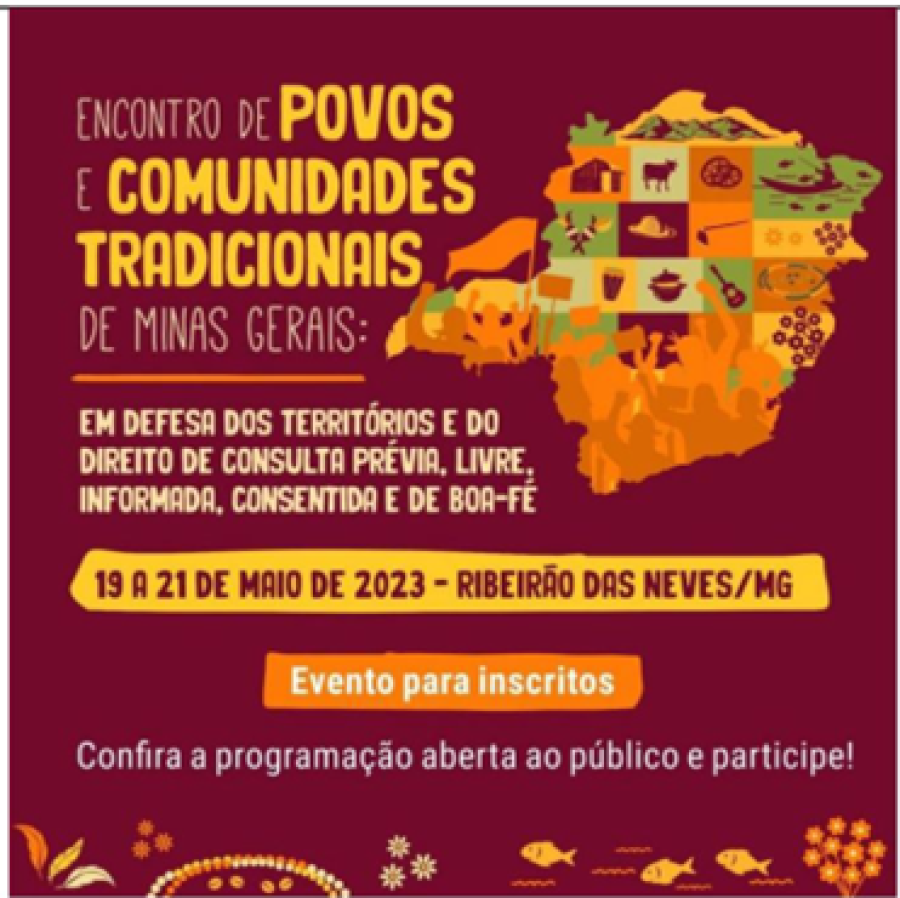The Cerrado today is seen as an area for agro-industry and for raising cattle. To open more space for monocrop soy cultivation and cattle ranching there has been tremendous deforestation of the Cerrado. And now the government plans to produce biodiesel from sugarcane grown in this area. Mato Grosso is viewed as a state with great potential for developing the biofuels industry. In the 1980s, soy was introduced in this region in the name of progress, and it devastated the Cerrado and Indigenous lands, including areas in the Pimentel Barbosa territory. Now the sugarcane business has the same objectives. It will destroy the Cerrado and Indigenous lands to create more space for monocrop agribusiness.
The government is promoting biofuels, making a big propaganda campaign and saying that biofuels offer an alternative way to make money. People think that biofuels are “green.” The problem is that the Cerrado is really suffering. The Cerrado is being threatened with extinction, and this agribusiness is also threatening Indigenous Peoples, like the Xavante. Farmers are going to put even more pressure on us, trying to rent areas that are inside Indigenous territories to plant their crops. They will try to convince us that sugarcane is a good alternative. But we are going to discuss this, to raise awareness, so that we will be ready and will not give in to temptation.
The farmers think that people who have already grown soy will want to grow sugarcane. They are going to plant sugarcane because it is more lucrative and because it represents “progress.” Three companies in the Araguaia region already have plans to build industrial biodiesel plants. These companies are coming from São Paulo, and the government is providing incentives for this industry. Medium and large entrepreneurs and the government are financing this. And the government of President Luiz Inacio da Silva is promoting this abroad, proposing these fuels as the alternative to the petroleum industry.
Despite the problems caused by the agroindustry that surrounds us, we are still hunters; we still collect fruits and vegetables from the Cerrado. It has been almost 60 years since the Xavante first contact but not much of our way of living has changed. The size of our land is what has changed the most. Now my community has only a small piece of land, only about 300,000 hectares.
The people who live in my community, Wederã, continue as hunters and collectors. Even though the space we live in is very small, we continue our ceremonies, passing our ancestors’ knowledge from one generation to the next so that we can continue as warriors and hunters.
The Cerrado is still intact in our area; it has Cerrado fauna and flora, and there is still game. But the future game supply depends on how we use this space. When we look at the land all around our territory, we see that it is all destroyed. The rivers are all ruined. The gallery forests along the river and stream banks are all cut down. Everything is naked. This is starting to happen inside our land but we are trying to manage our resources so that we will have them for the next 50 or 100 years and beyond. To have food, it is necessary to have space. Space is necessary for life.
As our population increases in Pimentel Barbosa, it is difficult for us to find sufficient game to meet our need for hunted meat. In the past five or six years, we have begun to revive a game management project that we started twenty years ago. We are now working specifically with the queixada [white-lipped peccary]. We chose queixada because this species lives in groups and reproduces easily. Also it is the Xavante’s preferred meat. We use it in our celebrations, in our ceremonies, and in all weddings.
Wildlife biologists who accompany our hunters are researching this. We are also trying to find out what other species are present in our territory. If there are other species like tapir, catitu, deer, and others, we want to know how many. We want to know what resources we have. We are also looking into their habitats, studying the fruits they eat and whether there is enough to feed the animal populations.
Queixada travel a lot. They move around and go wherever food is most plentiful. If our land doesn’t have much to offer, they move on. We are beginning to raise awareness of this in our community. We discuss the research findings in the warã, the central plaza and community meeting place, and with members of the study group. We talk about this work as a short-term project and imagine how it may evolve over the long term, say 10, 15, or 20 years from now.
We are already seeing results. Game is more plentiful now. There are a lot of queixada groups. Our biggest worry now is about the safety of this game. We want to know that the game that we hunt and eat is, and will be in the future, completely free of agritoxins.
Right now, we are discussing the use of fire in our hunting [the Xavante use controlled burnings in their traditional hunting practices]. Hunters must control their use of fire because too much burning can damage the Cerrado. Then the trees that the animals eat, like the pequi, jatoba, baru and macauba, don’t give fruit. We are trying to figure out how to deal with this because we want more animals in our land.
We need to plant in specific places to feed the animals that we want to remain in our lands. In other places we have to see which fruits are there. We have to see where the animals stay during the rainy season, in the winter, and also where they go in the dry season, in the summer, because the animals move depending on the seasons. The rainy season that begins in April and May is the reproduction season. The queixada start to leave the forested habitat around the rivers and go to places where it is more open. We are observing these movements and their behaviors.
The Cerrado is not only the place from which we take our food. It is also the source of our spiritual strength. It is where we teach each new generation how to become great warriors, how to become great hunters. We take our youth, the pre-initiate wapté and novitiate ritai’wa groups, on hunting trips with their mentors to mark their passage from one phase of life to the next. We take family hunting trips in the Cerrado and also special trips with groups of men.
Our relationship with the Cerrado is very deep; we have strong physical and spiritual bonds with it. We perform many ceremonies in the Cerrado, like the Wai’a spiritual initiation. In the Cerrado we prepare the wapté, pre-initiate boys, for the ear-piercing ceremony that transforms them into adults, and then we take them hunting.
People view the Cerrado as a place for agroindustry. We want non-Indigenous people to understand that the Cerrado is valuable for other reasons. It is full of riches. When people think about biodiversity, they don’t think about the Cerrado; they only think about the Amazon. The Cerrado is a very biologically rich ecosystem. It is full of natural resources. Most people forget that the majority of rivers in Brazil are born in the Cerrado and then flow to the Amazon. The Cerrado is the water source for many rivers in Brazil. And not just Brazil. The Cerrado supplies water for all the world.
We live in a time of climatic crisis, and everyone has a responsibility to care for the Cerrado. It is dear to us. Few people understand the Cerrado as we do; we have a special relationship with it and care deeply for it.
Really, the whole world has a responsibility to the Cerrado. Climate change is happening in Brazil, Africa, and Asia. It is all connected. It is happening because there is too much deforestation. The world’s greatest deforestation is occurring in Brazil. The government still doesn’t realize this, but this is what is happening to the Cerrado. The process is accelerating; the situation is getting worse. We have to pressure the government, because the way things are going, natural resources aren’t the only things that are threatened. All the people will be gone.
The world has always existed. Human beings were created, but the world—the water, the sky, and the land—have always existed. It is humanity who will disappear if we don’t take care.
This is my message. This is why it is important to support our struggle, the Cerrado peoples’ fight.
Cipassé Xavante is the leader of a community called Wederã located in the Pimentel Barbosa Indigenous Territory in the state of Mato Grosso. This article is adapted from an interview with Laura R. Graham in March 2009.



